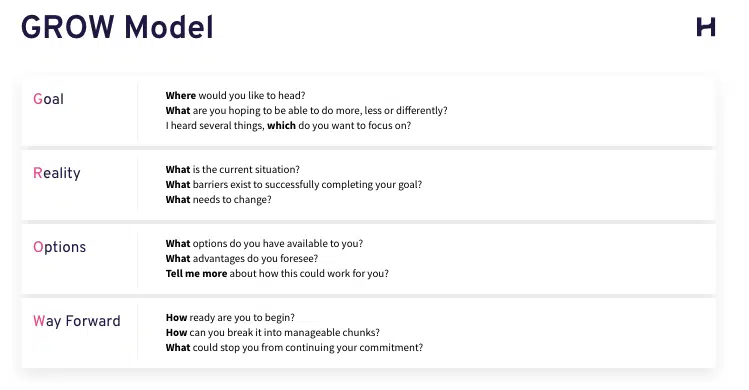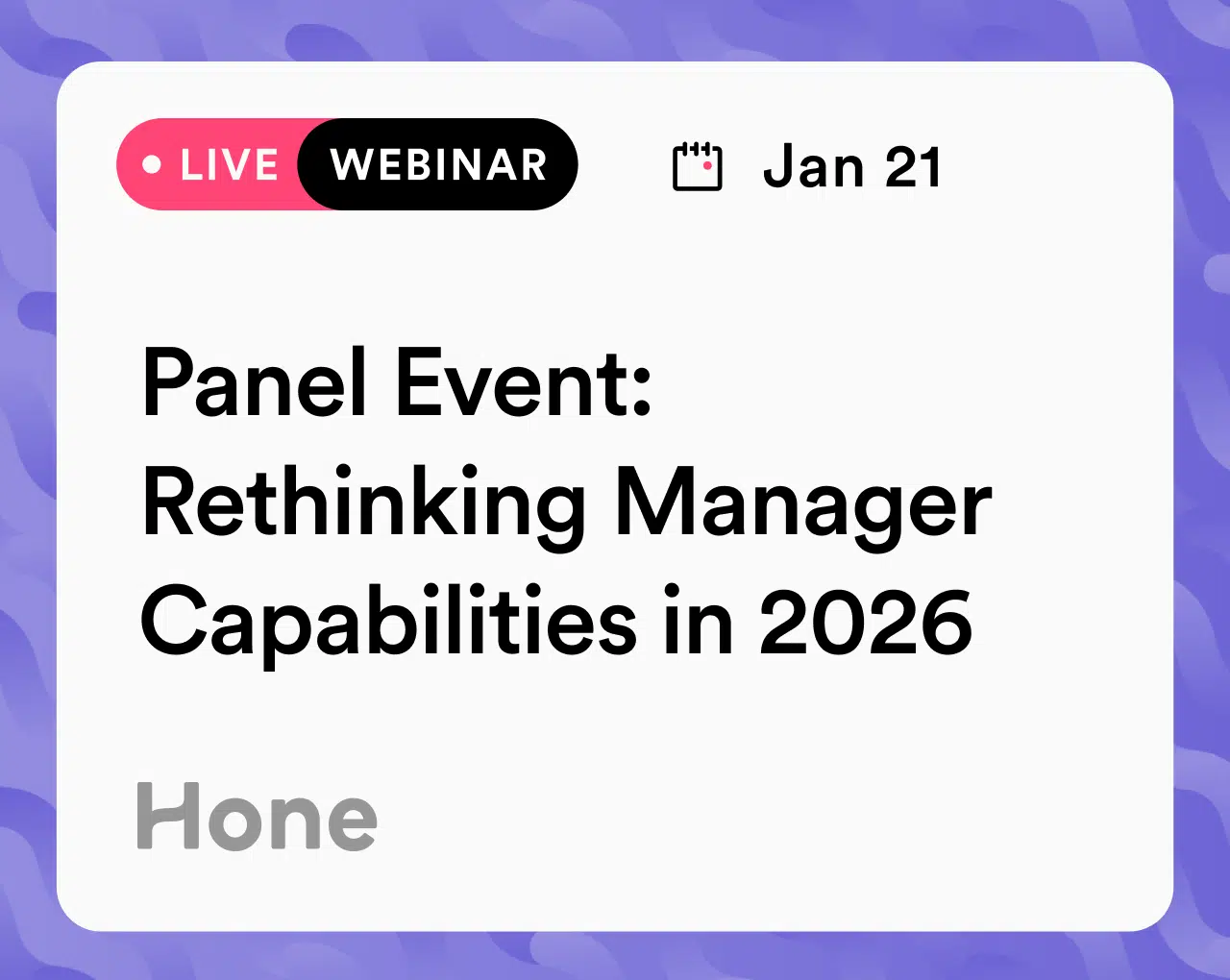Mid-year reviews are the perfect time to pause and reflect on an employee’s performance, reassess goals, share feedback, and discuss professional development opportunities. However, given the importance of these conversations, they can’t just be delivered off-the-cuff. Managers need to be trained on how to lead these conversations effectively, respectively, and empathetically.

The pandemic has been challenging for everyone, and the state of the world has affected us all in unique ways. Some employees may be struggling if they recently lost a relative, have to juggle being a full-time parent and employee, or care for a sick family member. Whatever challenges they’re facing, managers need the skills and knowledge to approach the topic of employee performance tactfully and effectively.
Here are the key skills your managers will need in order to give effective and empathetic mid-year reviews in the wake of the pandemic:
1. The ability to objectively evaluate employee performance
We’re all victims of our own biases. These biases, both conscious and unconscious, can push us to favor certain individuals over others, whether due to the color of their skin, gender, ability, or even just our capacity to identify with them. When it comes to performance conversations, managers need to be aware of their unconscious biases so they give everyone a just and fair evaluation.

Here are some common forms of unconscious bias that can affect a manager’s ability to rate an employee’s performance objectively:
- Recency bias: Recency bias is when a manager focuses on an employee’s most recent behavior, rather than equally weighing their performance since the last review cycle. For example, if an employee missed two meetings last week to pick up her child from school, but has otherwise attended every team meeting this year, a manager with recency bias might share the feedback, “You have a tendency to miss team meetings, so we end up missing out on hearing your valuable thoughts and opinions.” While it can be easier to remember things that happened recently, you must remind managers they need to evaluate an employee’s performance over the last six months.
- Similar-to-me bias: Similar-to-me bias is when a manager views someone more favorably because they have something in common. This could be that they have the same religion, went to the same school, or even have the same interests outside of work. This bond can bias a manager’s ability to objectively evaluate their direct report’s performance and might cause them to more favorably score an individual.
- Central tendency bias: Central tendency bias occurs when a manager is reluctant to take “an extreme stance.” For example, they might be reluctant to rate an employee a 1 for poor performance or a 5 for exceptional performance. This might result in the manager rating the majority of their staff in the middle of the rating scale, which can hurt their employees if other managers are more likely to rate employees higher and give them a leg up come promotion time.
Being aware of these biases often isn’t enough to ensure your managers are fairly evaluating their teams. In addition to self and manager assessments, you might want to consider incorporating feedback from an employee’s colleagues or teammates to include more perspectives throughout your mid-year review process. 
2. Leading with empathy
Again, the past year has been difficult for everyone. When your managers approach performance conversations this year, remind them to act with vulnerability and empathy and go into these conversations with an open mind. They should actively listen to their direct report, understand what might be affecting their performance, and work together to create an improvement plan (if needed) together. Employees should leave these conversations feeling seen, supported, and valued.

3. Giving feedback remotely
With offices slowly starting to open back up, there is a good chance your managers will still have to conduct mid-year reviews remotely. Conducting performance reviews over Zoom can be a little tricky as it’s harder to read body language and understand how employees are reacting to positive or constructive feedback. When it comes to delivering feedback effectively, Hone’s preferred method is Situation, Behavior, Impact, and Way Forward. Here’s how it looks in practice:

- Situation: Have managers describe the specific situation they want to discuss, such as an employee’s underpreparedness for team meetings or their ability to go above and beyond on projects. This is to ensure both parties understand the context behind the conversation and both agree on what occurred or what continues to be an ongoing issue.
- Behavior: Next, your managers should call out the employee’s precise behavior they want to discuss. It’s crucial they remain objective at this step and only mention verified facts, not gossip or hearsay.
- Impact: Then, managers should share the broader implications of this specific behavior. They should explicitly explain how this behavior impacts the team, a client, or the business at large. This helps your employee think more holistically about their behavior and how they might be harming others.
- Define the way forward: Lastly, you’ll want to come to a resolution with your employee. You want to train your managers not to dwell on the past, but instead keep their decision-making process focused on the future. They should also try to frame the conversation around finding and working toward a solution together to avoid putting all the blame or burden on the feedback recipient.
4. Investing in career growth
Lastly, mid-year reviews are the perfect opportunity for your managers to discuss professional development and career growth with their employees. To guide these conversations, Hone recommends training managers to use Sir John Whitmore’s GROW coaching model—which stands for Goal, Reality, Options, and Way Forward. Here’s what GROW looks like in practice:

- Goal: Instruct managers to start every growth conversation by asking an employee to share their goals. That gets both individuals on the same page and helps direct the rest of the conversation.
- Reality: Next, have managers establish what barriers are keeping their employees from achieving this goal. For an employee who wants a promotion, this might be needing to gain more experience or learn specific skills.
- Options: Then, have your managers and their direct reports review their options. For our employee eager for a promotion, this might be assigning them stretch projects or enrolling them in an online class to gain experience or learn new skills.
- Way forward: Once the pair has reviewed all viable options, it’s up to the employee to determine what the best way forward is. Then, with their manager’s support, they can continue working towards their long or short term career goals.
Just remember: professional development conversation should not be reserved solely for annual and mid-year reviews. Based on your conversation, managers should set periodic progress check-ins to hold reports accountable and keep these goals top of mind.
—
Unlike annual reviews, which have a certain finality to them, mid-year reviews give employees and managers the opportunity to check in on performance and progress to goals and make any adjustments as needed. It’s a powerful pulse check that can help motivate employees and increase productivity as you move into the second half of the year.
But in order for these conversations to be a success, your managers need to be prepped and trained on how to give the feedback and coaching that helps employees grow. Make mid-year reviews a breeze this year by partnering with Hone to train your managers on how to give effective feedback, to coach employees, and how to lead with empathy. Sign up for a free Hone trial and start designing a mid-year performance review training program catered specifically to your organization’s needs.













